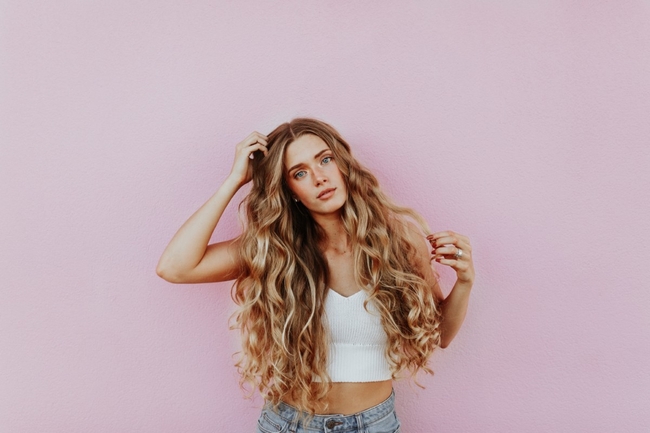Do you have a photography business and are looking to move to the next level? The best businesses are always looking at ways to improve, and adopting better processes to generate more revenue.
Setting up your own photography studio is a significant investment. If you are at the stage where your business defines your brand personality, then this article is for you. It explains how to set up your own photography studio, which will then give you complete control of your photography work process. Besides, it also eliminates the heavy costs you incur while preparing for a shoot in a rented professional studio. Peerspace charges $100 per hour for a studio rental while other places may charge several hundreds of dollars.
Having a studio of your own frees up your imagination from standard settings and lets you stand out from the competition. In this article, we will talk about everything that you need to know to build your first photography studio.
Tips to set up home photography studio
Where Should your Photo Studio be Located?
Deciding where to build your studio depends upon your client list. If you are a portrait photographer, whose clientele consists of local families, then a local place would suffice. However, if you mainly do product or fashion photography, your business is better off situated near the city center.

Studio costs could also be an inhibiting factor. The cost of office space is inversely proportional to the distance of your studio from the town’s commercial center. You may be able to acquire a more substantial area with more parking and open views for less money uptown. If you absolutely need to be in midtown, living, and working out of home is an option you could explore. You must also include the cost of insurance into the studio investment. If you are strapped for money and on a budget, consider turning your living area into a home photography studio
It is advisable to undertake a recce of locations and find out prevailing rents in prospective studio locations. Make sure that your transport and scaling-up costs are also factored in. You should estimate the potential revenue you stand to earn with a professional studio. Survey other the rates charged by other photographers in your field and attempt to estimate the value a studio would bring to your work.
Be brutally honest in your self-assessment, and don’t be afraid to ask for opinions from among your peers. If you find the worth of your work lacking in quality, you should first work on filling the gaps in your skill sets.
Interior Design Matters
Once you’ve settled on a location for your photo studio, you should move on to estimating the cost of repairs and renovations that the place would require. Assess the areas in which you specialize and consider the physical space that you have available.
"Different sizes of space are applied to different types of home photography studios. And that means you need to measure your space and the genre of your studio photography (size of subjects) ahead of time." ~ Dylan Yu, Katebackdrop
Read more: How Much Space Do You Need For Photo Studio?

Using the space that you have efficiently requires that you segregate areas for particular jobs. Portrait photographers would need space for a backdrop screen, a work desk, a filing cabinet for prints, furniture, magazines, and toys. The last three items will help make a good impression on your customers. They will also help build a positive ambiance for word-of-mouth for your photography portfolio.
Food photographers, on the other hand, may require a table and chairs along with a kitchen area. Product photographers would need souvenirs and knick-knacks to serve as photography props.
The color of the walls should support the kind of photography effects you most prefer for your camera. Soft colors such as white are an excellent choice if you want greater light reflection and wish to beat off the shadows. Note that matte finishes are better than glossy ones if your intention is to keep glare under control.
Use smooth wooden or marble flooring because you will need to move stands around often. Such floors will also lend an elegant look to your dream photography studio.
Empty spaces and bare walls where your clients will be seated is a big NO. Remember that you only sell what you can show. So, consider filling your waiting area with print samples of your best work.
Lighting Equipment
Getting the lighting right is massively important to convey the right brand message. Product photographers shooting images for jewelry, sporting accessories, clothing, or equipment need to capture the subject’s USP. The position of the source of light creates light and dark patches that give immense power to a portrait. You can even change natural colors and moods to emphasize the subject’s features.
You can utilize natural sunlight to your advantage by having windows facing north and south. This alignment will give your studio ample access to the sun throughout the day. Unfortunately, daylight is unconstant, and cloudy days will force you to use artificial light sources.

LED Lamps
While soft, natural light is great for outdoor photography, your studio photos cannot do without a consistent source of artificial light. To control artificial light, you need the right kind of lighting equipment. Constant and continuous light can be reliably obtained for under $20 with modern LED lamps. Combine these with color filters and DIY lighting strips to produce an impressive range of colors. These are perfect for tabletop photography, including photographing food and still items.
Speedlights
For flash photography, you need speedlights, or stroboscopic lamps (aka strobe lights). Both of these lights create brief, bright flashes that endow your subject with character. They serve to block out the sun and create intense deep shadows. Beginner photographers can get decent Speedlight kits for under $150 complete with wireless trigger, studio softbox, translucent white umbrella, and flash. Popular options for basic strobe kits include Neewer and Flashpoint.
Strobe Lights
The difference between speedlights and strobe lights lies principally in the amount of light each can supply. Speedlights are lightweight, portable items that can be used outdoors as well as in on-camera settings.
Monolight strobes can provide up to 1000 Watts of concentrated power. They have the advantage of a broader range of supporting light modifiers available. They are great for use with octagonal, parabolical, and softbox diffusers and allow greater control in light manipulation. Strobe lights tend to be pretty expensive, generally going upwards of $500 for high-end models.
Fresnel lights use lenses with successive concentric rings, each of which bends light passing through in a way that results in a single powerful beam of light. These lights are suitable for distance shots of props in product photography.
Fresnel lens lights are great for illuminating dark rooms, but they are also more expensive. Consider using Fresnel lamps if your remuneration covers the extra cost.
Many modern DSLR or mirrorless cameras have their own on-camera flash arrangements. However, you could lose mobility and flexibility with attached flashlights. To learn more about how lighting can work for your photographs, click here.
Modifiers
A light modifier is a piece of equipment that controls the direction and spread of light before it reaches your subject. A full-on beam unflatteringly details skin texture and tone. It also produces hard shadows that add discordant contrast to your image. That is why you need something to diffuse bright lights.

Modifiers come in three varieties:
- Umbrellas: There are shoot-through translucent photography umbrellas that provide soft white light. Use these for evenly lit images. Reflective umbrellas have shiny light-facing surfaces that produce a more consistent reflection. These are great for portraits and advertisement graphics. You can also find intermediate options for experimentation.
- Softboxes: When you want to highlight your model without lighting up the backdrop, softboxes are the smarter option. These are rectangular or octagonal shaped umbrellas with a diffusion cover that spread soft light over a smaller area than an umbrella.
- Scrims: Umbrellas and softboxes have limited movement, focus, and portability. Scrims are flat pass-through screens that can provide a more precise focus for soft light. Most professional photographers would want to use these for high-quality work.
Portrait photographers sometimes require a Beauty Dish to get that soft contrast on a face by evening out shadowed and lit areas. These are small circular diffusers that train light over the model’s face.
Types of Camera Lens Filters & Why you Need them
Filters can correct the color bias of natural light, correct exposure, and add effect to an otherwise listless shoot.
Neutral Density filters or ND filters are like dark glasses that limit the amount of light that can enter the camera without resulting in a change in color. When shutter speeds are low, wide apertures result in less light falling into the camera, causing moving objects in a photograph to look blurred. This effect helps the viewer to distinguish moving water, vehicles, smoke, etc. from the still parts of your image.
Similarly, you can use ND filters in bright sunlight in landscape photography to focus on selective elements.
Polarizing filters allow light from only certain polarizations to pass through. These filters are used to reduce reflections from glossy surfaces, water, or glass.
Color filters are often used to change the warmth or cooling effects of natural colors in the environment.
Specific filters are available to substitute for a zoom lens, introducing visual and other special effects.
Setting up the Perfect Backdrop
Photography backdrops not only bring contextual elegance to your images, but they also help control the reflection of light and exposure. You can introduce a glamorous ambiance to a photo by merely populating the background with the right color. To ensure that you get the right texture, lighting, and color temperature, you need artificial screens to serve as backdrops.

Photography backdrops available in the market are made of paper, fabric, or vinyl. Fabric backdrop options include muslin, canvas, or velvet. Printed canvas serves as an excellent substitute for natural rock, water, or sky. Other artificial prints are conveniently portrayed with muslin backdrops. Velvet may be used in situations when you want to depict stately luxury and extravagance.
Seamless paper does the job of a colored wall quite adequately and is also the most economical option. You can easily change or roll up seamless paper backgrounds from collapsible stands or wall mounts. Don’t forget to buy holders, clamps, and clips to keep these screens in place.
Vinyl is another easy-to-use backdrop material being easy to clean and keep crease-free. You can experiment with various colors, textures, prints, art backgrounds, etc. to infuse some creativity into your shoot.
You can also use floor drops made of vinyl to replicate vintage wood panels or brick walls. These make for stunning backdrops in portrait photography, newborn and family photography.
Saving your Light Stands from Damage
As a creative photographer, you will continuously be required to move your sources of light to capture side views and bolster shadows. But as you wheel them around, you or your models may fumble and trip over your light stands.
LED lamps are costly, and you don’t want to have to replace bulbs after every photo shoot continuously. Hence, you need to anchor your light stands with appropriate weights. Sand-filled bags are the best and least expensive ways to shore up your lighting equipment. You can buy high-strength sandbags for as little as $16 apiece. Alternatively, build your own little make-shift weights by filling old sacks with non-abrasive sand grains.
Special Items for Portrait Photography, Newborn Photography, Still Life, & Product Photography
Having a cuddly toy or two can be incredibly useful when you’re trying to coax a newborn baby into position for a photoshoot. Hairbows, blankets, and soft pillows also make for great props in newborn photography.
Portrait photographers find that a simple wooden stool serves to capture many attractive angles of their subject. It also forces the model to stay absolutely still while you’re experimenting with lighting and colors.
Still life photographers often need props to introduce an element of artistic contrast into their image. Product photographers need similar imaginative methods to play up a brand message. Hence, a cabinet of the most commonly used photography props can help you take superb photographs.
Items to Stock up on: Adapters and Batteries

Stocking up on a range of adapters and batteries will not only help you save on studio time, but it will also keep your energies focused on your best creative efforts. Too often, photographers neglect to keep extra batteries in inventory and end up with disrupted client schedules. This creates a bad impression. In the long run, this could prove detrimental to your reputation as a photographer.
Floors, Furniture, Storage Cabinets
The way your floors look affects the reflective quality of your photographs. Bouncing light off garage floors is next to impossible. Go for elegant wood or marble panels if you can afford them. However, a clean granite floor with low-light bounce is a decent alternative if you already have strong lights in place.
Alternatively, you can use sheet vinyl flooring to give the semblance of elegant wooden floors or marble. The idea is that your photograph should obtain the refinement of stylish interiors without burning a hole in your pocket. Here is a list of top interior photography portfolio website examples for your use.
Tethering with a Computer: Do I really need this?
Being able to review and edit your images instantly on Adobe Photoshop or Lightroom is addictively convenient. But the fact is that a tablet or smartphone would do equally well given today’s small-form-factor leaps in technology. You don't have to use Adobe Photoshop on your Mac to edit images like a pro. There are plenty of other good photoshop alternatives that you can check.
You don’t necessarily need an Apple iMac or Dell XPS to create impressive photo editing. You do need decent computing power. Hence, budget options such as the Microsoft Surface Book 2 will do a fine job for real-time dodging, burning, and toning.
How Much Should I Spend?
The amount of money you should spend on your photography studio depends upon your skill levels and not on your budget. You should have a convincing plan in place to expand your photography business. You should also be able to transfer the expansion in skill sets to verifiable recognition.
Make a list of your expenses in order of their importance. Then list your sources of revenue. If you are pursuing photography as a hobby, or recreation, then you will do well to keep your studio investment to a minimum.
How Do I Get my work Recognized?
Put up your work on social platforms such as 500px or Instagram. Offer a short but captivating description. Ensure that you add tags for the type of photography you specialize in. To begin with, you can ask your friends, acquaintances, and clients to push likes on your image posts. Over a period of time, you will be able to obtain due recognition once people have discovered your work.

Alternatively, you can get your work recognized simply by setting up a digital home for your photo portfolio. The advantage of owning your own portfolio website is that you get more control in organizing and presenting your best work. A website is also superior in terms of SEO and web discoverability. In terms of marketing your brand, a web address is way better than a social media account.
Conclusion
Setting up a photography studio will help your business thrive, cut rental costs and give you complete control of your photography work process. However, you should not expect your studio to automatically increase your client base.
In order to grow your client pool, you need to promote your business. YOU can do this by focusing on how you present your portfolio online. You can capture maximum eyeballs by setting up an eye-catching photography portfolio online. Here, you can upload, organize, secure, and sell your work conveniently with a digital platform that’s entirely your own.
Apart from greater control, you also get to avoid overhead costs and needless hassles while managing your photo clients. Pixpa lets you automate your gallery downloads, purchases, printing, and drop shipping from one seamless platform.
Choose your own stunning themes, write passionate blogs, collect client emails, implement client forms on your site, and much more. Start your 15-day FREE Pixpa trial today.














